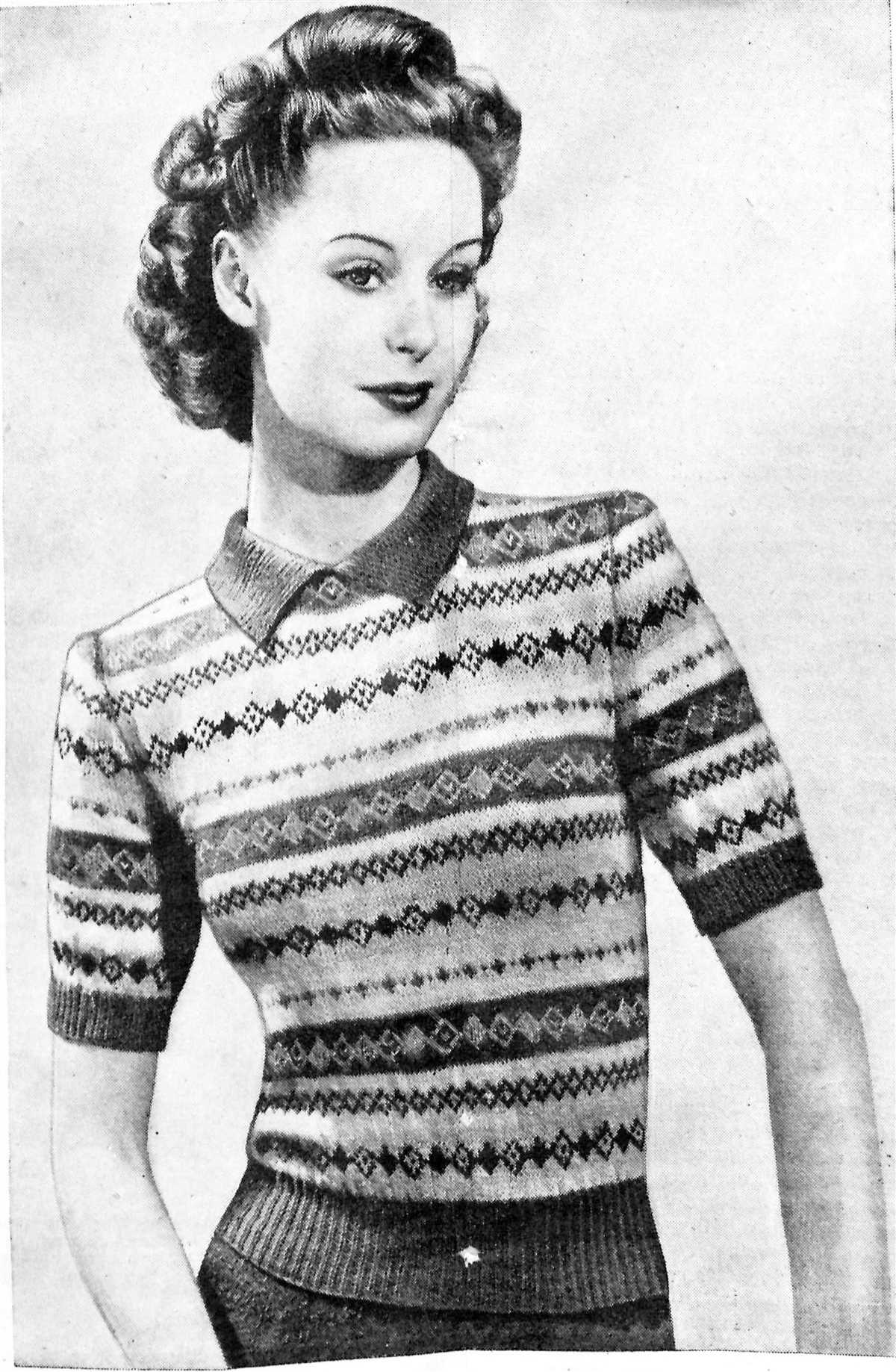
The 1940s were a time of creative knitting patterns that added warmth and style to wartime fashion. During World War II, materials like silk and nylon were scarce, and women turned to knitting needles to create the latest fashion accessories. Knitting patterns from the 40s reflected the era’s practicality and resourcefulness while still incorporating stylish details and feminine charm. These patterns showcased everything from elegant sweaters and cardigans to cozy scarves and hats, and they are still beloved by knitting enthusiasts today.
One of the most iconic knitting patterns from the 40s is the classic Fair Isle design. Popularized by the British royal family, Fair Isle patterns feature intricate colorwork and geometric motifs. Knitters in the 40s embraced this technique, creating vibrant sweaters and cardigans that showcased their knitting skills. Fair Isle patterns often incorporated traditional motifs inspired by nature, such as flowers, birds, and waves. These patterns required a keen eye for color selection and precision in knitting, and they continue to inspire knitters today.
Another popular knitting trend in the 1940s was the use of novelty yarns, such as mohair and angora. These luxurious and fluffy yarns added texture and softness to knitted garments, making them both stylish and cozy. Knitting patterns from the 40s often featured fuzzy mohair cardigans or fluffy angora wraps, perfect for keeping warm during winter months. These yarns were also used for creating delicate accessories like berets and gloves, adding a touch of glamour to any outfit.
Despite the challenges of war, the 1940s proved to be a golden age for knitting. Knitting patterns captured the spirit of the era with their practicality and creativity, showcasing a wide range of styles and techniques. Whether you’re a beginner knitter or an experienced enthusiast, exploring 40s knitting patterns can provide inspiration and a unique glimpse into fashion history.
Knitted Dresses
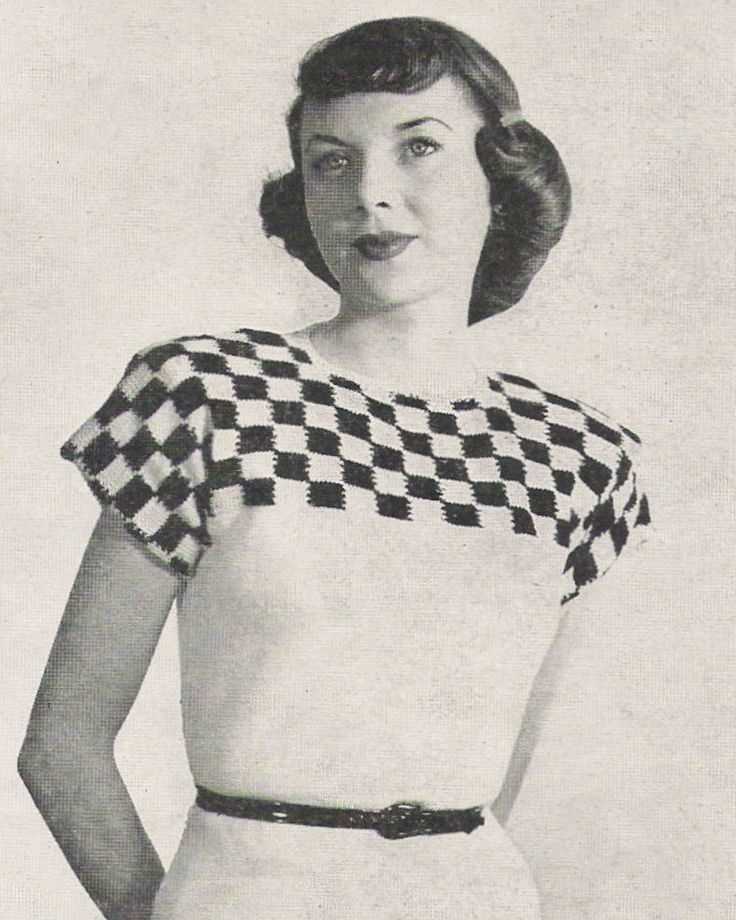
Knitted dresses were a popular fashion choice during the 1940s. These dresses were not only stylish, but also practical and comfortable. Knitted dresses were often made from soft and warm wool, which made them perfect for colder weather. They were also versatile, as they could be dressed up or down depending on the occasion.
Patterns: There were various knitting patterns available for knitted dresses in the 1940s. Some popular designs included fitted dresses with ribbed waists and flared skirts, as well as more relaxed styles with loose-fitting bodices and A-line skirts. These patterns often featured intricate details such as textured stitches, cables, or lace inserts, adding an extra touch of elegance to the dresses.
- Colors: Knitted dresses in the 1940s were typically available in a range of classic and muted colors, such as navy blue, gray, brown, and black. These colors were chosen to complement the overall style and to provide a timeless look that could be worn for multiple seasons.
- Accessories: To complete the look, women often paired their knitted dresses with accessories such as gloves, hats, and scarves. These accessories were usually made from matching or contrasting yarns, adding a coordinated and polished touch to the outfit.
In summary, knitted dresses were a popular choice in the 1940s, offering a stylish and practical option for women. With a variety of patterns and colors available, these dresses allowed women to express their personal style while remaining comfortable and warm during the colder months.
Knitted sweaters
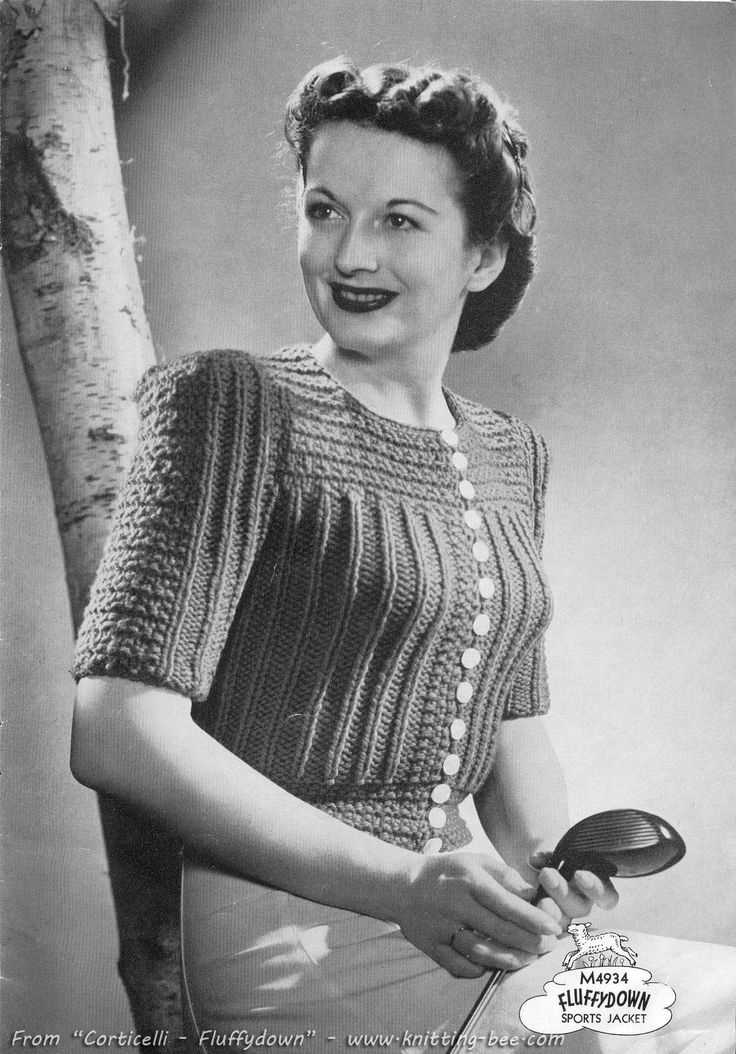
Knitted sweaters were a staple in 1940s fashion, providing both warmth and style during the colder months. These sweaters featured intricate patterns, bold colors, and unique designs that showcased the craftsmanship and creativity of knitters at that time.
One popular style of knitted sweaters in the 1940s was the cardigan. These sweaters had a front opening with buttons or a zipper, allowing for easy wear and removal. The cardigans often featured interesting geometric patterns or motifs, adding visual interest to the garment. They were typically made from wool or other warm and durable materials to withstand the chilly weather.
Women’s knitted sweaters
For women, knitted sweaters were essential wardrobe pieces. They were often worn over blouses or dresses, creating a layered and feminine look. Women’s sweaters in the 1940s were designed to be form-fitting, accentuating the waist and creating an hourglass silhouette. Some sweaters had decorative elements like bows or ribbons, further enhancing their femininity.
Additionally, women’s knitted sweaters often featured delicate details like lace inserts or scalloped edges, adding a touch of elegance to the garment. These sweaters were not only practical for keeping warm but also acted as fashionable statement pieces, showcasing the wearer’s personal style and attention to detail.
Men’s knitted sweaters
Men also embraced the trend of knitted sweaters in the 1940s. Unlike women’s sweaters, men’s sweaters were usually more relaxed and had a boxier fit. They were often made with thicker yarns to provide additional warmth during colder weather.
Men’s knitted sweaters often featured simpler patterns and designs compared to women’s sweaters. Fair isle patterns with contrasting colors were popular choices, creating a classic and timeless look. These sweaters were versatile and could be worn casually with a pair of trousers or dressed up with a suit jacket for a more formal occasion.
Knitted Hats and Scarves
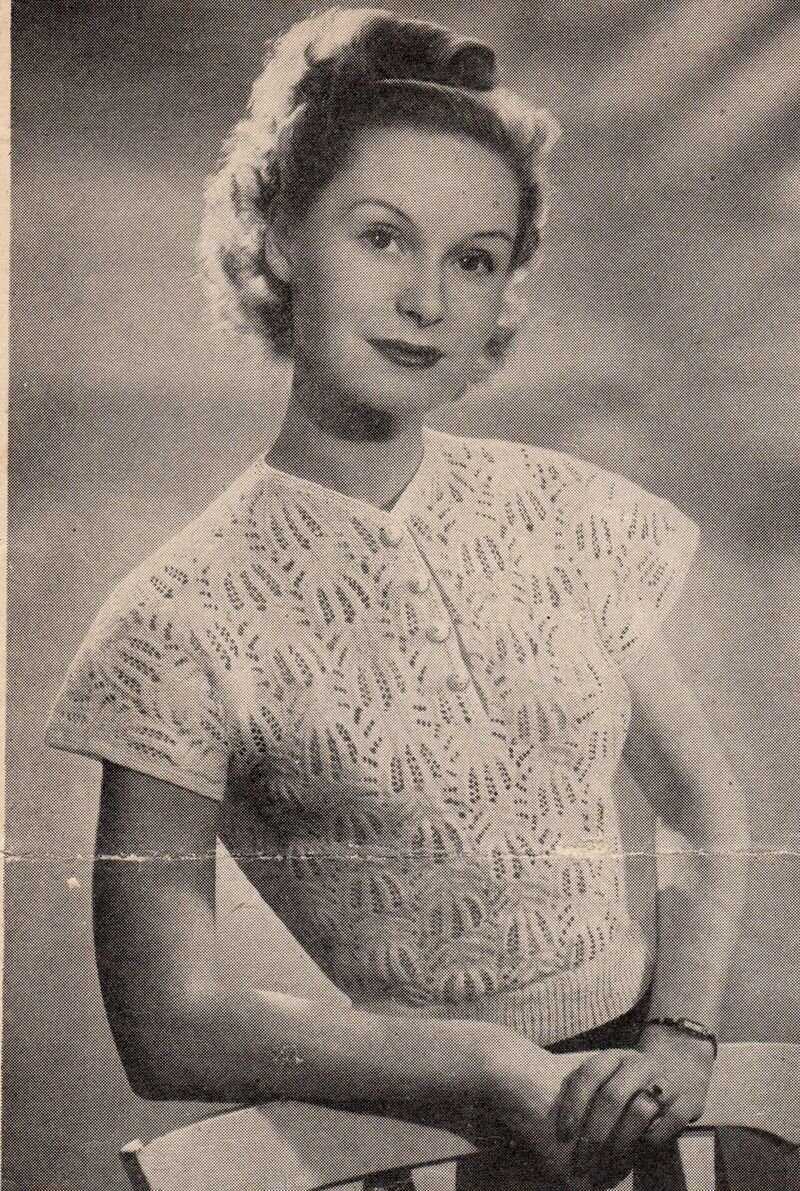
Knitted hats and scarves were essential accessories in the 1940s. Women and men of all ages embraced these cozy and fashionable items during the cold winter months. The 1940s knitting patterns offered a variety of designs and styles, allowing knitters to create unique and personalized headwear and neckwear.
One popular type of knitted hat in the 1940s was the beret. Berets were often adorned with cute pom-poms or decorative buttons, adding a touch of charm to any outfit. Knitters could experiment with different colors and patterns to match their wardrobes or create statement pieces. The berets were not only practical for keeping the head warm but also added a stylish flair to any ensemble.
Knitted scarves in the 1940s were primarily long and chunky, providing maximum warmth in chilly weather. These scarves were often made with thick wool or acrylic yarn and featured intricate cable or ribbed patterns. They were typically wide enough to cover the neck and could be draped around the shoulders for extra coziness. Scarves were versatile accessories that could be paired with a variety of outerwear, such as peacoats or trench coats, ensuring both style and functionality.
- Knitted hats and scarves were popular accessories in the 1940s.
- The beret was a fashionable choice for women.
- Scarves were long, chunky, and made with warm materials.
- Both hats and scarves could be customized with different colors and patterns.
- These accessories added warmth and style to winter outfits.
Knitted gloves and mittens
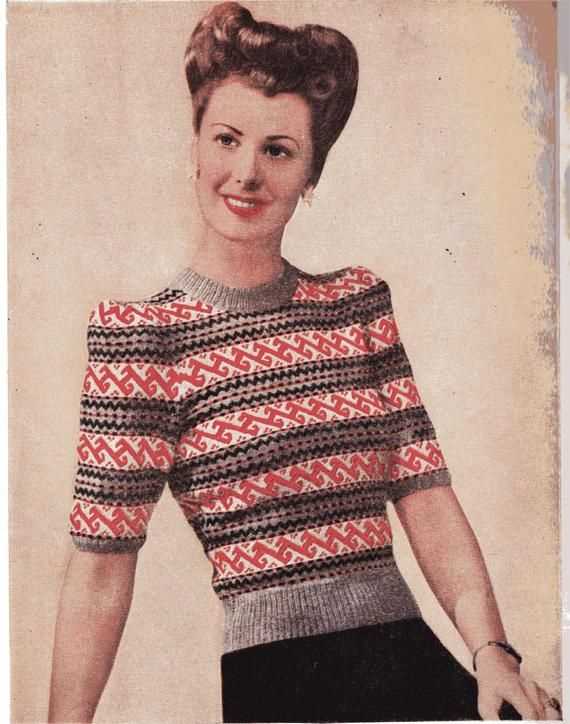
In the 1940s, knitted gloves and mittens were essential accessories for keeping hands warm and stylish during the colder months. These handmade items were often crafted with intricate patterns and delicate details, showcasing the skill and artistry of the knitter. Whether worn for everyday outings or special occasions, knitted gloves and mittens were a practical and fashionable choice for both men and women.
One popular style of knitted gloves in the 1940s was the fingerless glove, also known as the “glovelet.” These gloves featured open fingers, allowing for greater dexterity while still providing warmth. Fingerless gloves were commonly worn by women in the 1940s to keep their hands warm while still being able to perform tasks such as typing or writing. They were often adorned with lace or decorative stitches, adding a touch of elegance to any outfit.
Another popular choice for handwear in the 1940s was the knitted mitten. Mittens provided more coverage and insulation than gloves, making them ideal for colder weather. They were often knitted with wool or other warm yarns, ensuring that hands stayed cozy even in the chilliest temperatures. Knitted mittens were typically adorned with patterns such as cables, fair isle, or argyle, adding a touch of visual interest to these practical accessories.
Knitted gloves and mittens from the 1940s continue to inspire modern knitters today. The intricate patterns and timeless designs of these vintage accessories are still cherished by those who appreciate the art of knitting. Whether seeking to recreate the styles of the past or putting a modern twist on a classic pattern, knitted gloves and mittens from the 1940s serve as a reminder of the enduring appeal and versatility of handmade knitwear.
Knitting techniques popular in the 40s
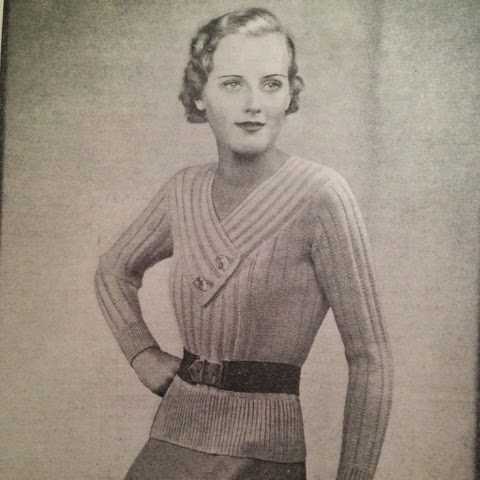
In the 1940s, knitting was a popular pastime for women, and many innovative techniques were developed during this time. One of the most popular techniques was Fair Isle knitting, which originated from a small island in Scotland. Fair Isle knitting involved using multiple colors in a single row, creating beautiful geometric patterns. The technique required carrying the unused colors along the back of the work, resulting in a thick and warm fabric. Fair Isle knitting was often used to create cozy sweaters and cardigans.
Cable knitting was another popular technique in the 40s. Cables are created by crossing stitches over each other, creating a twisted and intricate design. This technique was often used to create textured patterns on sweaters, hats, and scarves. The resulting fabric was not only visually appealing but also provided extra warmth and thickness. Cable knitting required a set of cable needles to hold the stitches in the correct order while crossing them over each other.
Other knitting techniques popular in the 40s included lace knitting and intarsia knitting. Lace knitting involved creating delicate and intricate patterns using yarn overs and decreases, resulting in a fabric with beautiful openwork designs. Lace knitting was often used for shawls, doilies, and delicate garments.
Intarsia knitting, on the other hand, involved knitting with different colored yarns to create large, solid color blocks or pictures. This technique required working with multiple balls of yarn and required attention to detail to prevent holes or gaps between the color changes. Intarsia knitting was often used to create decorative motifs or pictures on sweaters and blankets.
In conclusion, the 1940s saw the popularity of various knitting techniques, such as Fair Isle knitting, cable knitting, lace knitting, and intarsia knitting. These techniques allowed knitters to create beautiful and intricate designs, resulting in cozy and stylish garments.
Tips for knitting 40s patterns today
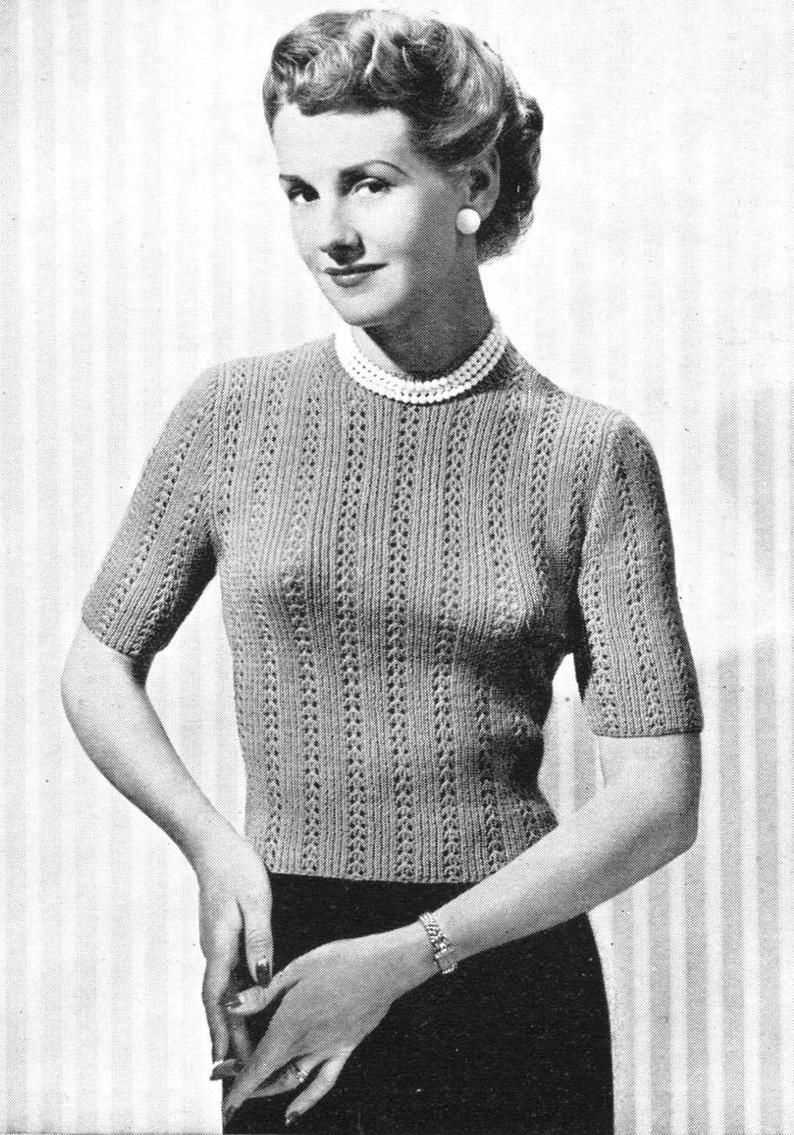
Knitting patterns from the 1940s offer a unique glimpse into the fashion and style of that era. While these patterns may require some adjustments to fit modern sizing, they can still be enjoyed and recreated today. Here are some tips to help you with knitting 40s patterns:
1. Understand the sizing
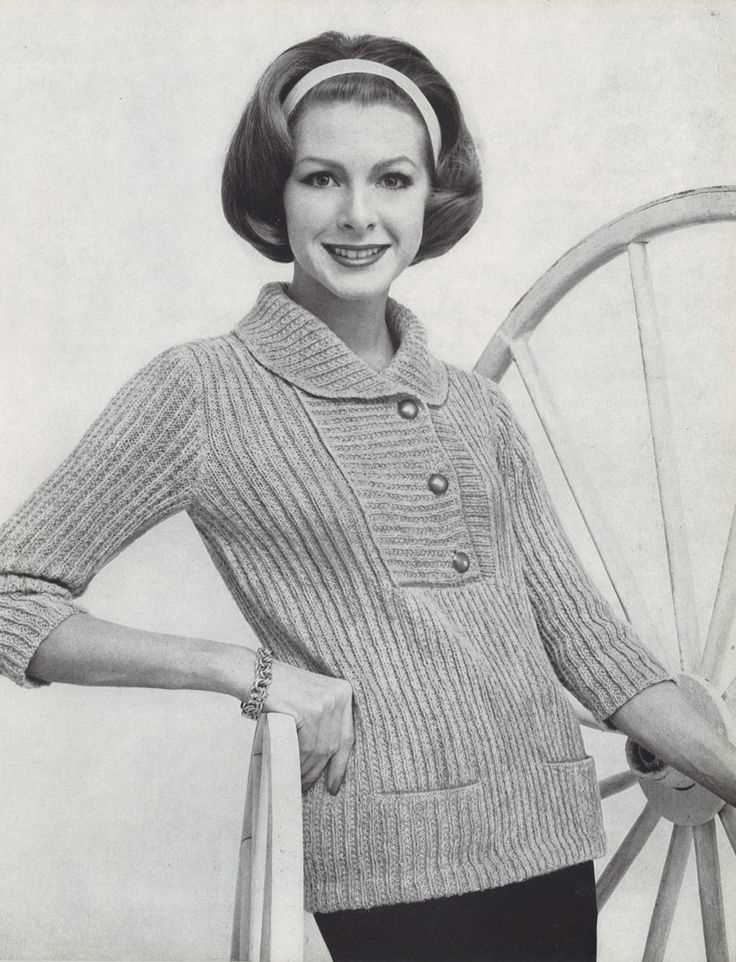
40s knitting patterns often use different sizing conventions than what we are familiar with today. It is important to carefully read the instructions and understand the measurements given. Compare them to your own measurements and make any necessary adjustments to ensure a proper fit.
2. Choose modern yarns
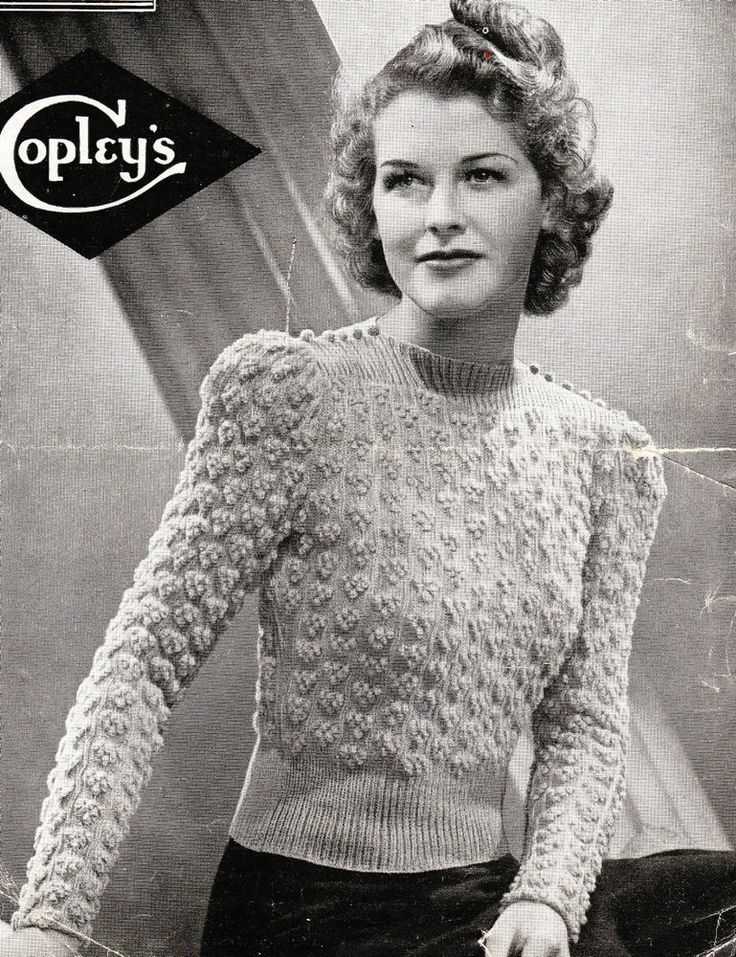
While the original patterns may suggest certain types of yarn, you can choose modern equivalents that are more readily available. Look for yarns that have a similar weight and fiber content to the yarn recommended in the pattern. Experiment with different yarns to achieve the desired texture and drape.
3. Gauge is key
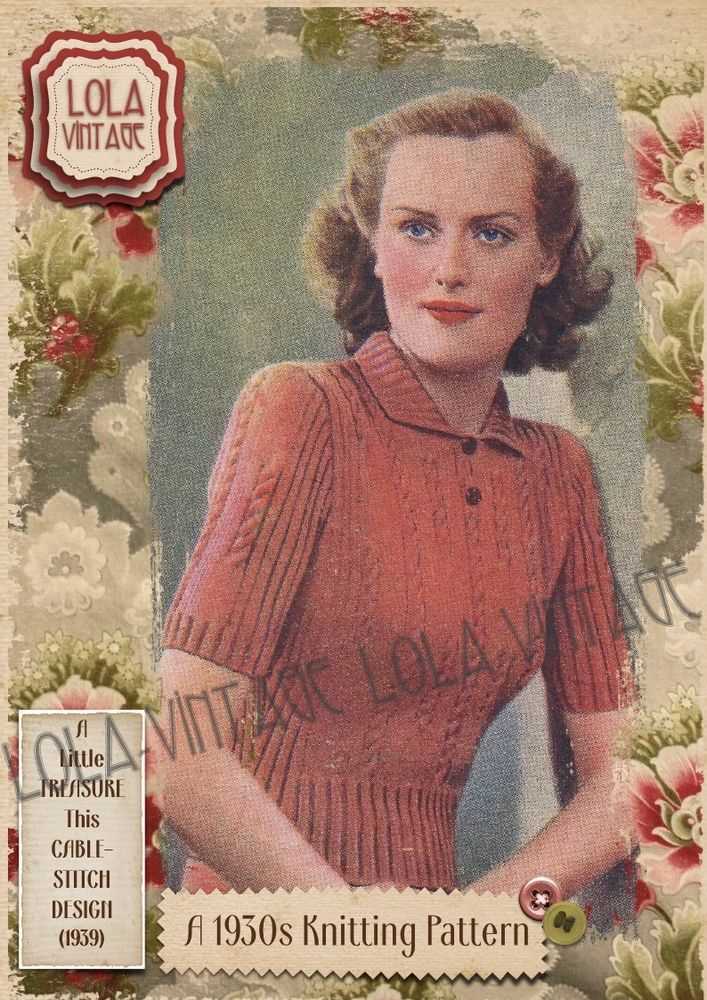
40s knitting patterns may not always provide gauge information, but it is crucial to achieving the correct sizing and fit. Take the time to swatch and determine the gauge using the recommended needle size and yarn. Adjust your needle size if necessary to match the gauge given in the pattern.
4. Keep track of pattern modifications
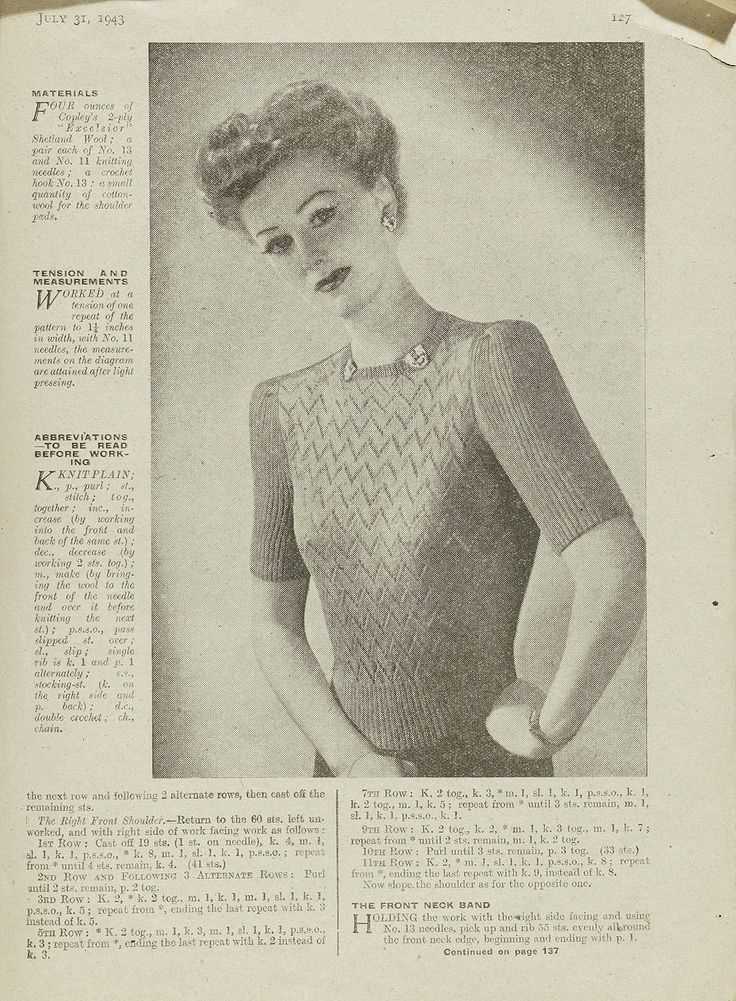
As you knit a 40s pattern, keep a record of any modifications you make to the pattern. This will help you recreate the garment accurately if you decide to knit it again or if you want to share the modifications with others. Note any changes to the stitch counts, shaping, or finishing details.
5. Get inspired by modern interpretations
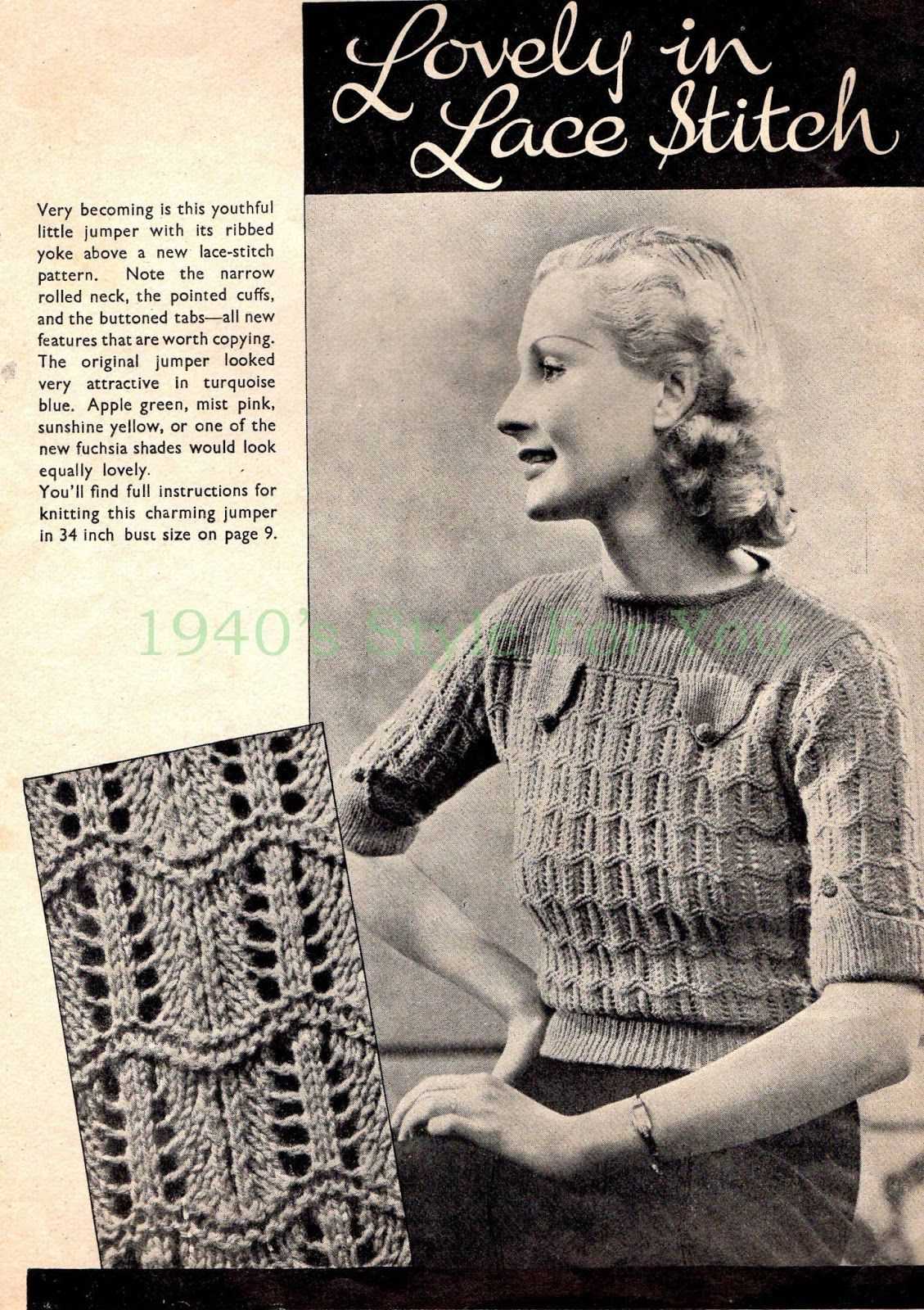
Take inspiration from modern interpretations of 40s knitting patterns. Look for projects and designers who have adapted these vintage patterns to fit modern styles and sizing. This can give you ideas on how to modify and update the patterns while still retaining their classic charm.
Knitting 40s patterns can be a rewarding experience, allowing you to recreate the fashion and style of that era. With a little patience and some modifications, these patterns can be brought to life once again.